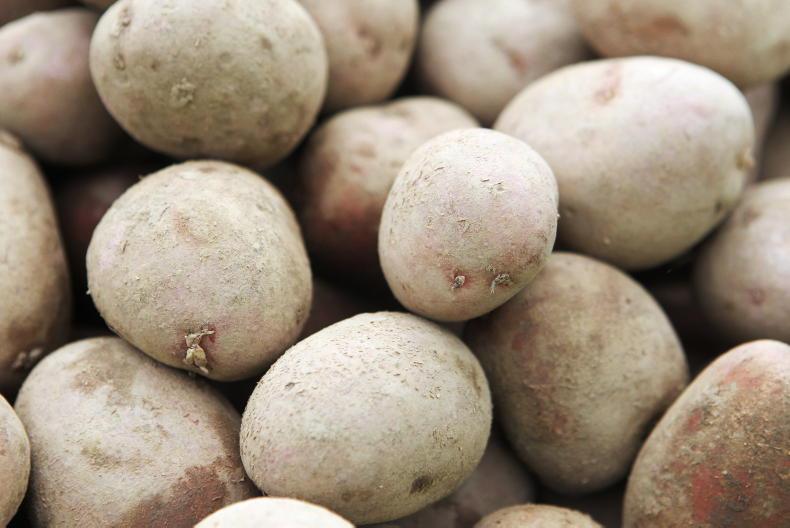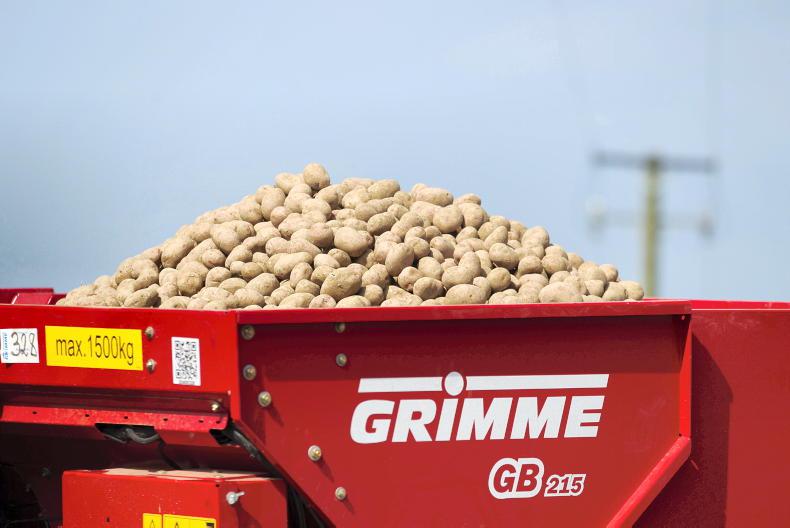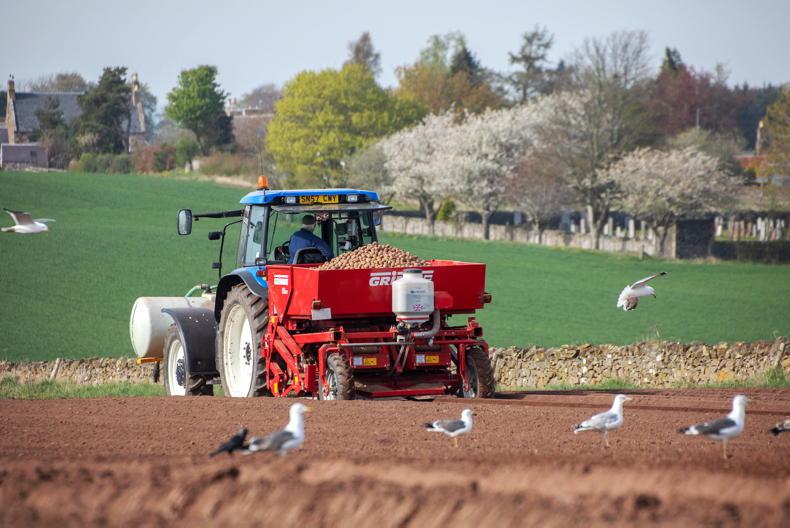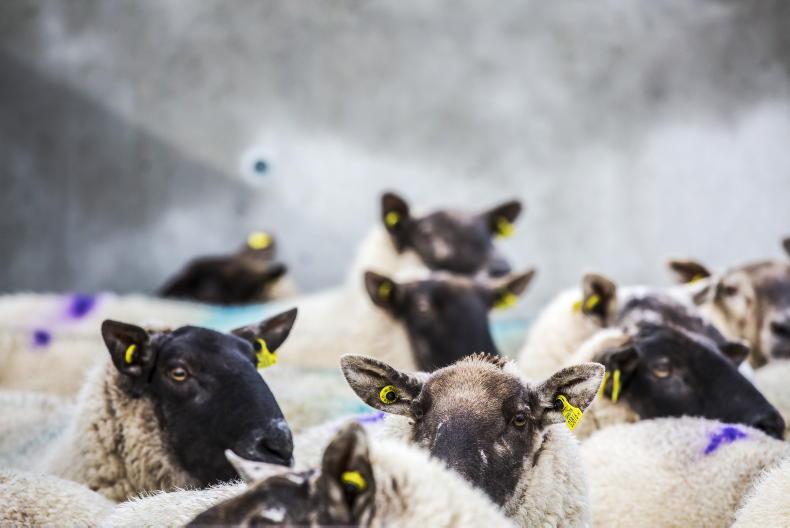Brexit has presented significant opportunities to increase the production and supply of Irish-grown seed potatoes. These were the opening words from Minister of Agriculture Charlie McConalogue at last month’s Teagasc potato seed webinar.
McConalogue is no stranger to the seed potato industry, with many of Ireland’s seed growers located within his constituency in east Donegal. As such, he is aware of the mammoth effort required at Government, industry and farmer level if the Irish seed potato industry is to be revived.
Brexit was a landmark moment for Irish agriculture for a host of reasons, many of which were negative. When the UK officially exited the customs union and single market on 1 January 2021, it became a third country.
This means that EU plant health rules in the area of intra-union trade in plants and plant products no longer apply.
This also means that British seed potatoes are now banned from entering the EU and unless the UK dynamically aligns with EU plant health regulations, this ban is here to stay.
Irish seed production and
requirements
The ban is set to severely disrupt modern potato supply chains in Ireland. On average, we import over 6,000t of certified seed potatoes to service our ware potato industry. As shown in Table 1, 60% of these came from Scotland.
Under the Northern Ireland Protocol however, seed imports from Northern Ireland (NI) are still allowed. Ware imports from the UK are also still allowed. In 2020, we imported 77,000t of ware potatoes from the UK and these imports are still allowed.

Ireland imports over 6,000t of certified seed potatoes each year
However, they are now subject to new checks and requirements.
From September to December 2020, nearly 5,000t of seed potatoes were imported, meaning that supply for the 2021 planting season was largely undisrupted.
The challenge now begins from 2022. Potato seed is divided into grades, ranging from the purest mini-tubers, to pre-basic (PB), super elite to elite.
As seed is multiplied from year to year, it generally drops a grade until it is no longer suitable as seed. This means that it will still be a number of years before British seed is completely out of the system.
However, if enough pre-basic Irish seed is not produced to replace imports, then we are likely to face shortages in the coming years.
Table 2 highlights the seed potato area certified from 2016 to 2020. In 2020, Irish growers grew and certified just over 2,000t of seed.
Increasing our seed production area to meet the 6,000t deficit will not happen overnight, as it will takes years to multiply the required volumes of seed through the various grades. This three to five year process needs to start now if we are to meet this demand.
Potato seed basics
If we are to substantially increase the area of Irish seed potatoes, new seed growers will be needed.
Producing high-quality seed potatoes isn’t straightforward and starts with accessing suitably clean land. Seed ground needs to have a minimum rotation of seven years between potato crops.
In theory, Ireland has a high amount of virgin seed potato land, i.e. ground that had little to no potatoes in the rotation. However, with the expansion of dairy farming and the move towards long-term leases, land availability is very tight.
Addressing this issue on the webinar, Minister of State Pippa Hackett said she would like the Department to tease out how collaboration between different farming sectors could be encouraged to help access land for seed potato production.
Researcher Denis Griffin explained that certain regions of Ireland have advantages which favour seed production, with lower aphid pressure in the north-west and east being a good example of this.
Land must be free from soil-borne diseases such as potato cyst nematode (PCN) and needs to be sown at twice the seed density of ware, around 4.2-5t/ha. As a rule of thumb, reduce rates of nitrogen by 50-60kg N/ha for seed crops and in general, seed crops are ready for harvest 90-100 days after planting.
Virus
One of the biggest challenges of producing seed potatoes is controlling virus infection. Potato virus Y (PVY) is the important virus in seed potatoes. Control is challenging, due to its capacity to generate novel strains.
If it is present in a crop, infected plants must be rogued. Ewen Mullins of Teagasc explained that symptoms of PVY can vary from strain to strain and diagnosis is challenging. However, a new handheld testing device, developed under the SCOPE project, has an analysis turnaround time of between 10-15 minutes and is set to dramatically improve in-field diagnoses of PVY.

Increasing our seed production area to meet the deficit won’t happen overnight.
While there is no actual control available for the virus, the device allows you to control the vector, ie aphids. Aphid control is an integrated approach, but still very much involves the use of insecticides.
Shay Phelan of Teagasc explained that a spray programme should involve the use of a range of available actives throughout the season. Where appropriate, the use of full label rates, starting early when crops are most susceptible (50% emergence) and spraying in the evenings to reduce impacts on non-target species, should be implemented.
Brexit has presented significant opportunities to increase the production and supply of Irish-grown seed potatoes. These were the opening words from Minister of Agriculture Charlie McConalogue at last month’s Teagasc potato seed webinar.
McConalogue is no stranger to the seed potato industry, with many of Ireland’s seed growers located within his constituency in east Donegal. As such, he is aware of the mammoth effort required at Government, industry and farmer level if the Irish seed potato industry is to be revived.
Brexit was a landmark moment for Irish agriculture for a host of reasons, many of which were negative. When the UK officially exited the customs union and single market on 1 January 2021, it became a third country.
This means that EU plant health rules in the area of intra-union trade in plants and plant products no longer apply.
This also means that British seed potatoes are now banned from entering the EU and unless the UK dynamically aligns with EU plant health regulations, this ban is here to stay.
Irish seed production and
requirements
The ban is set to severely disrupt modern potato supply chains in Ireland. On average, we import over 6,000t of certified seed potatoes to service our ware potato industry. As shown in Table 1, 60% of these came from Scotland.
Under the Northern Ireland Protocol however, seed imports from Northern Ireland (NI) are still allowed. Ware imports from the UK are also still allowed. In 2020, we imported 77,000t of ware potatoes from the UK and these imports are still allowed.

Ireland imports over 6,000t of certified seed potatoes each year
However, they are now subject to new checks and requirements.
From September to December 2020, nearly 5,000t of seed potatoes were imported, meaning that supply for the 2021 planting season was largely undisrupted.
The challenge now begins from 2022. Potato seed is divided into grades, ranging from the purest mini-tubers, to pre-basic (PB), super elite to elite.
As seed is multiplied from year to year, it generally drops a grade until it is no longer suitable as seed. This means that it will still be a number of years before British seed is completely out of the system.
However, if enough pre-basic Irish seed is not produced to replace imports, then we are likely to face shortages in the coming years.
Table 2 highlights the seed potato area certified from 2016 to 2020. In 2020, Irish growers grew and certified just over 2,000t of seed.
Increasing our seed production area to meet the 6,000t deficit will not happen overnight, as it will takes years to multiply the required volumes of seed through the various grades. This three to five year process needs to start now if we are to meet this demand.
Potato seed basics
If we are to substantially increase the area of Irish seed potatoes, new seed growers will be needed.
Producing high-quality seed potatoes isn’t straightforward and starts with accessing suitably clean land. Seed ground needs to have a minimum rotation of seven years between potato crops.
In theory, Ireland has a high amount of virgin seed potato land, i.e. ground that had little to no potatoes in the rotation. However, with the expansion of dairy farming and the move towards long-term leases, land availability is very tight.
Addressing this issue on the webinar, Minister of State Pippa Hackett said she would like the Department to tease out how collaboration between different farming sectors could be encouraged to help access land for seed potato production.
Researcher Denis Griffin explained that certain regions of Ireland have advantages which favour seed production, with lower aphid pressure in the north-west and east being a good example of this.
Land must be free from soil-borne diseases such as potato cyst nematode (PCN) and needs to be sown at twice the seed density of ware, around 4.2-5t/ha. As a rule of thumb, reduce rates of nitrogen by 50-60kg N/ha for seed crops and in general, seed crops are ready for harvest 90-100 days after planting.
Virus
One of the biggest challenges of producing seed potatoes is controlling virus infection. Potato virus Y (PVY) is the important virus in seed potatoes. Control is challenging, due to its capacity to generate novel strains.
If it is present in a crop, infected plants must be rogued. Ewen Mullins of Teagasc explained that symptoms of PVY can vary from strain to strain and diagnosis is challenging. However, a new handheld testing device, developed under the SCOPE project, has an analysis turnaround time of between 10-15 minutes and is set to dramatically improve in-field diagnoses of PVY.

Increasing our seed production area to meet the deficit won’t happen overnight.
While there is no actual control available for the virus, the device allows you to control the vector, ie aphids. Aphid control is an integrated approach, but still very much involves the use of insecticides.
Shay Phelan of Teagasc explained that a spray programme should involve the use of a range of available actives throughout the season. Where appropriate, the use of full label rates, starting early when crops are most susceptible (50% emergence) and spraying in the evenings to reduce impacts on non-target species, should be implemented.











SHARING OPTIONS